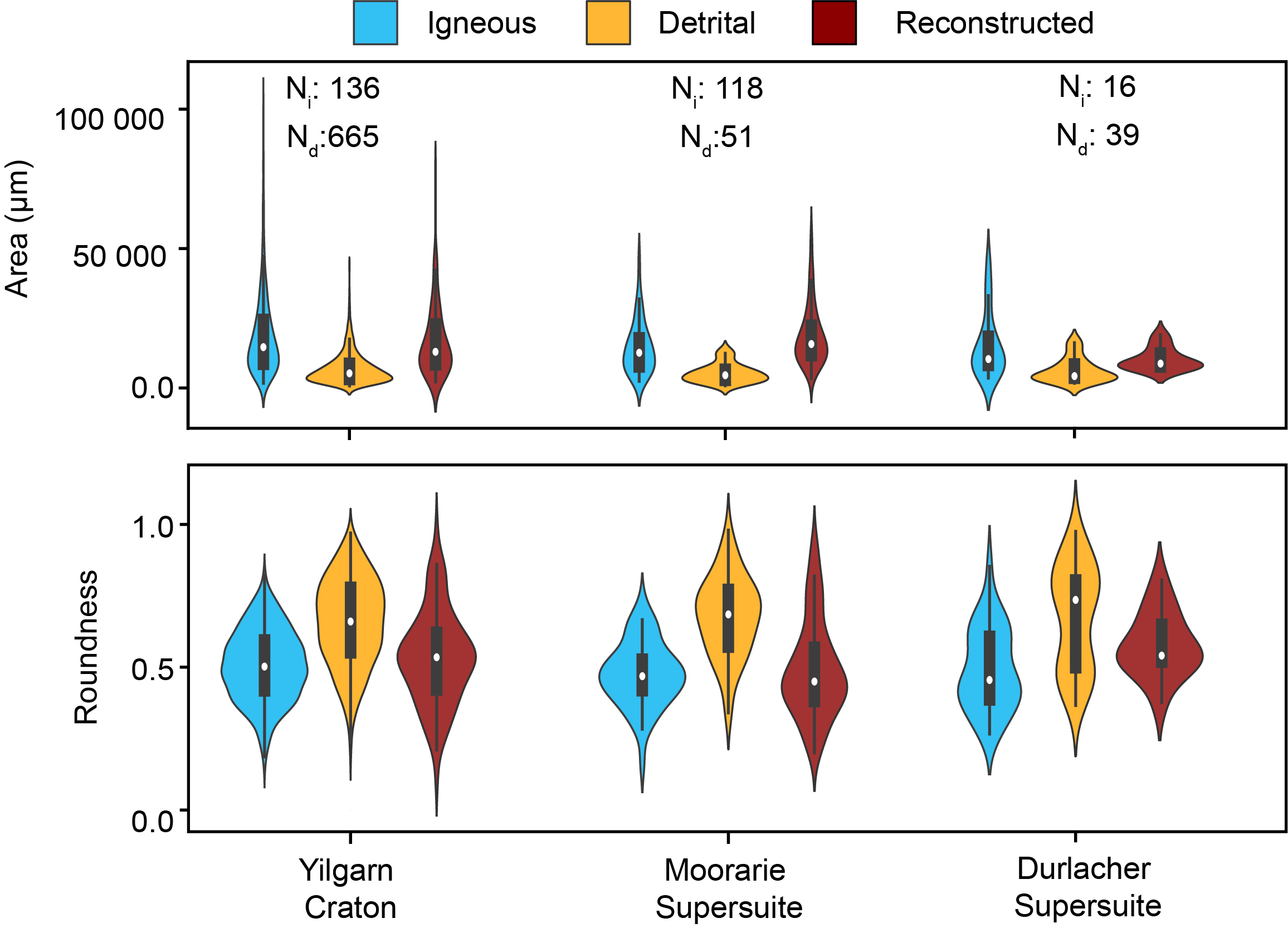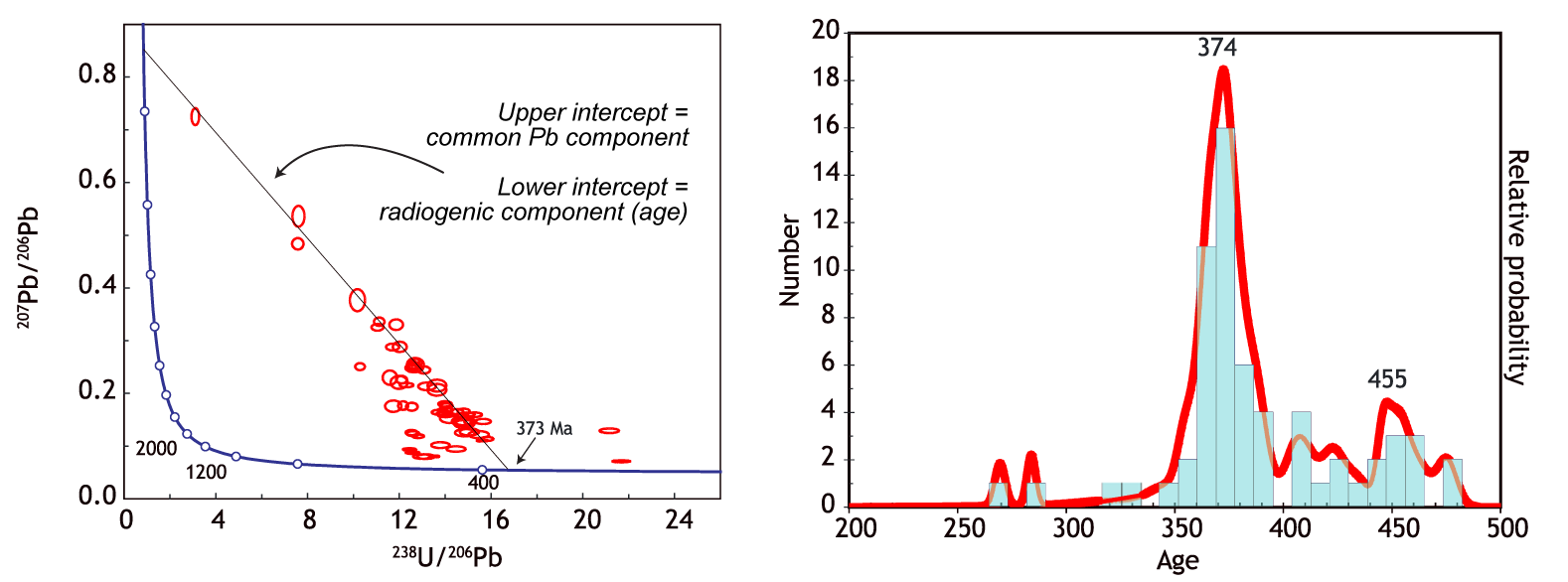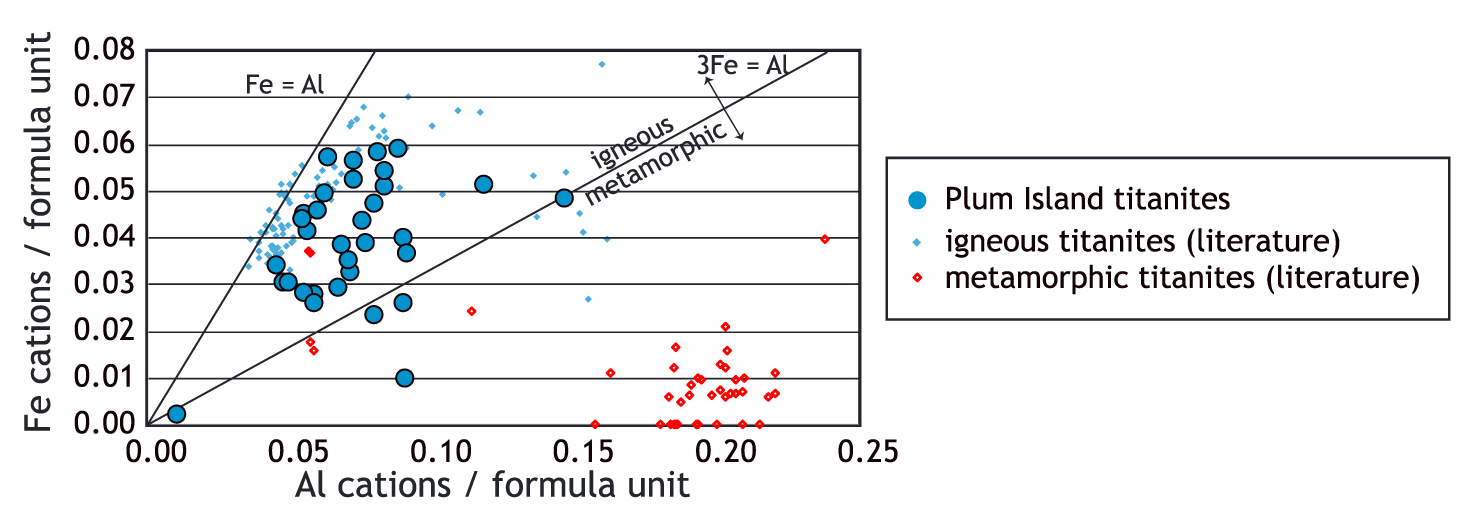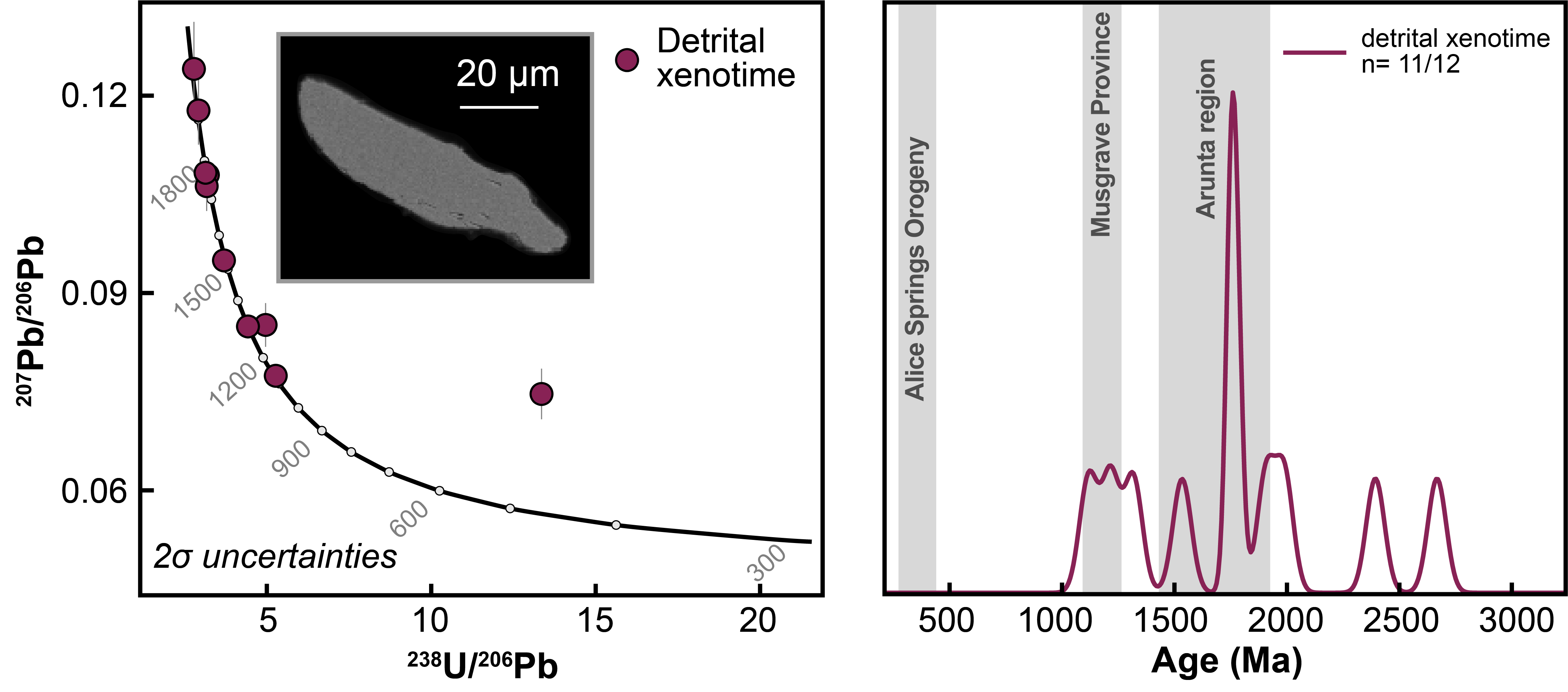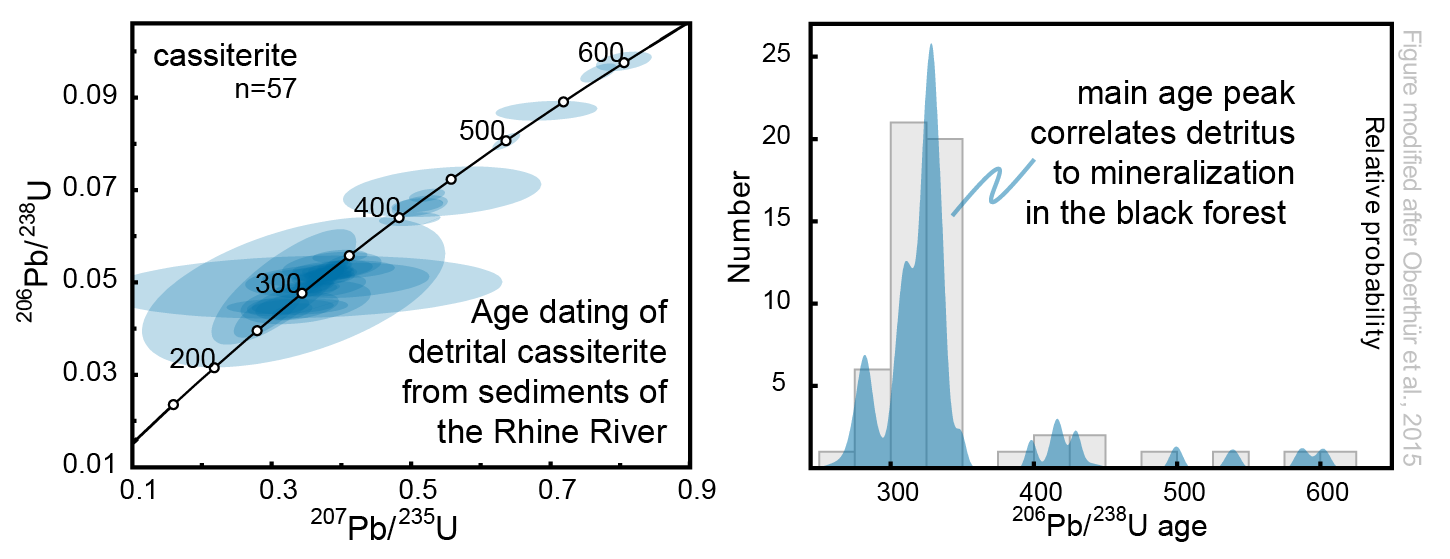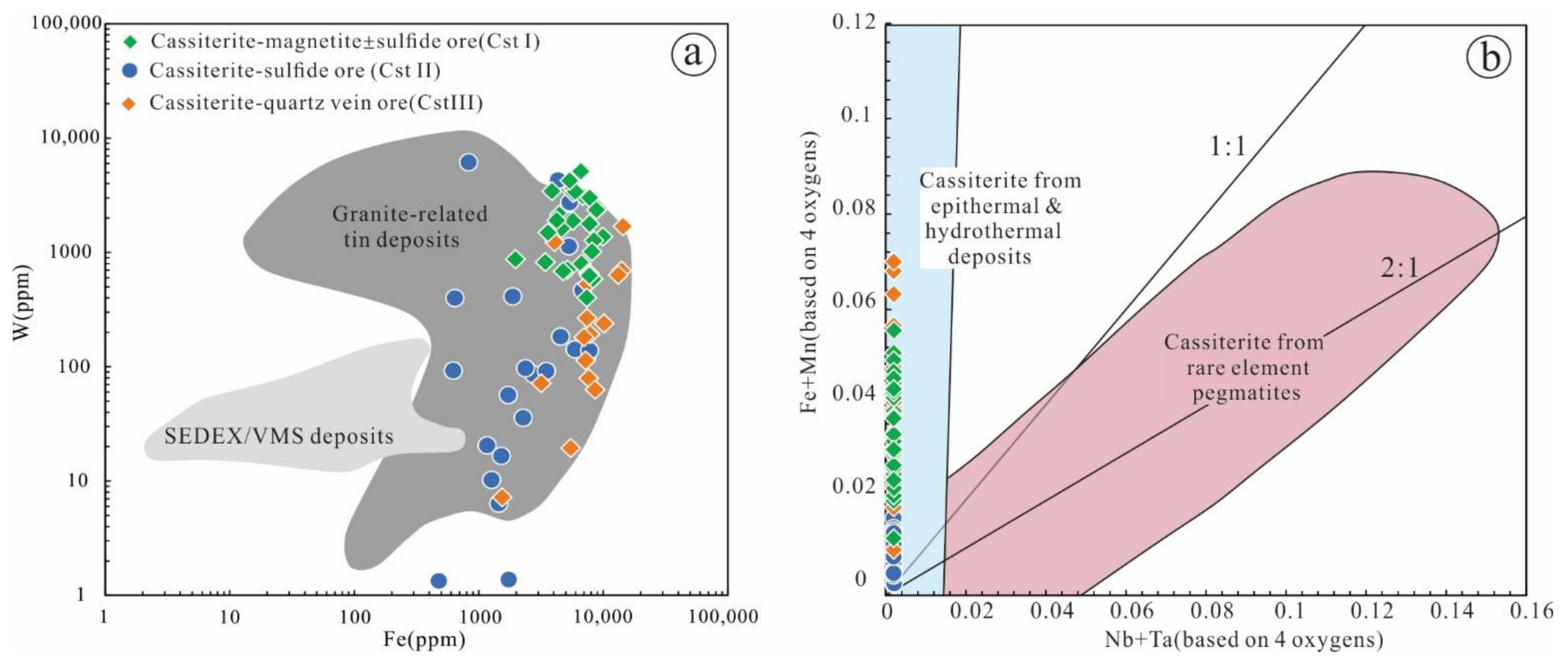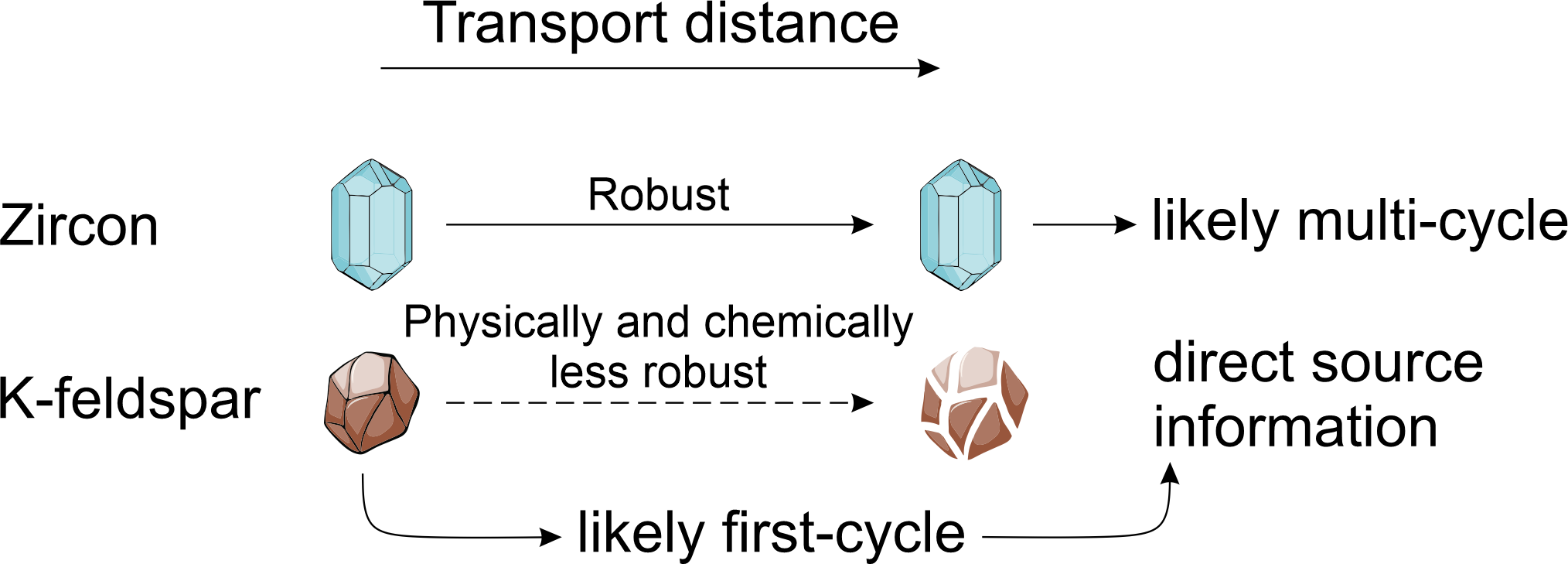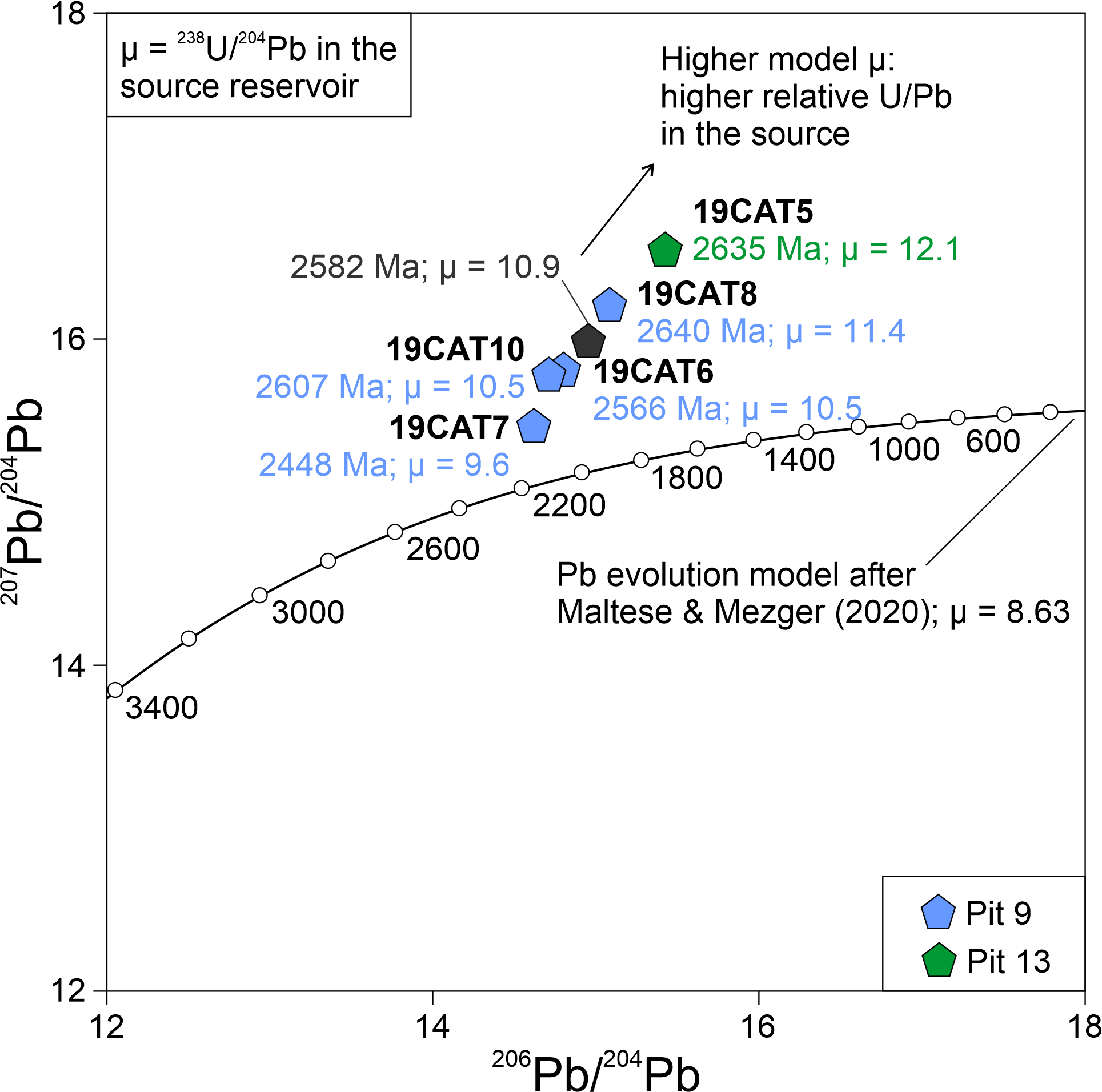See the world in a grain of sand!
 RESOURCE FERTILITY: Source characterisation
RESOURCE FERTILITY: Source characterisation
- Dating of detrital minerals
- Protolith characterisation and discrimination using trace element analysis
- Estimations of mineral formation temperatures (e.g., to decipher the metamorphic grade of source rocks)
- Accurate silica estimates for zircon source rocks (e.g. as a discriminant in provenance analysis)
- Measuring the diagnostic age spectrum (fingerprint) of detrital minerals allows for correlation of detritus and source rocks
- The gold standard (due to internal verification of the age) is U-Pb geochronology that can be performed on a wide variety of minerals, e.g., zircon, titanite, rutile, monazite
- Recent technological advances also allow for Lu-Hf geochronology of garnet and apatite
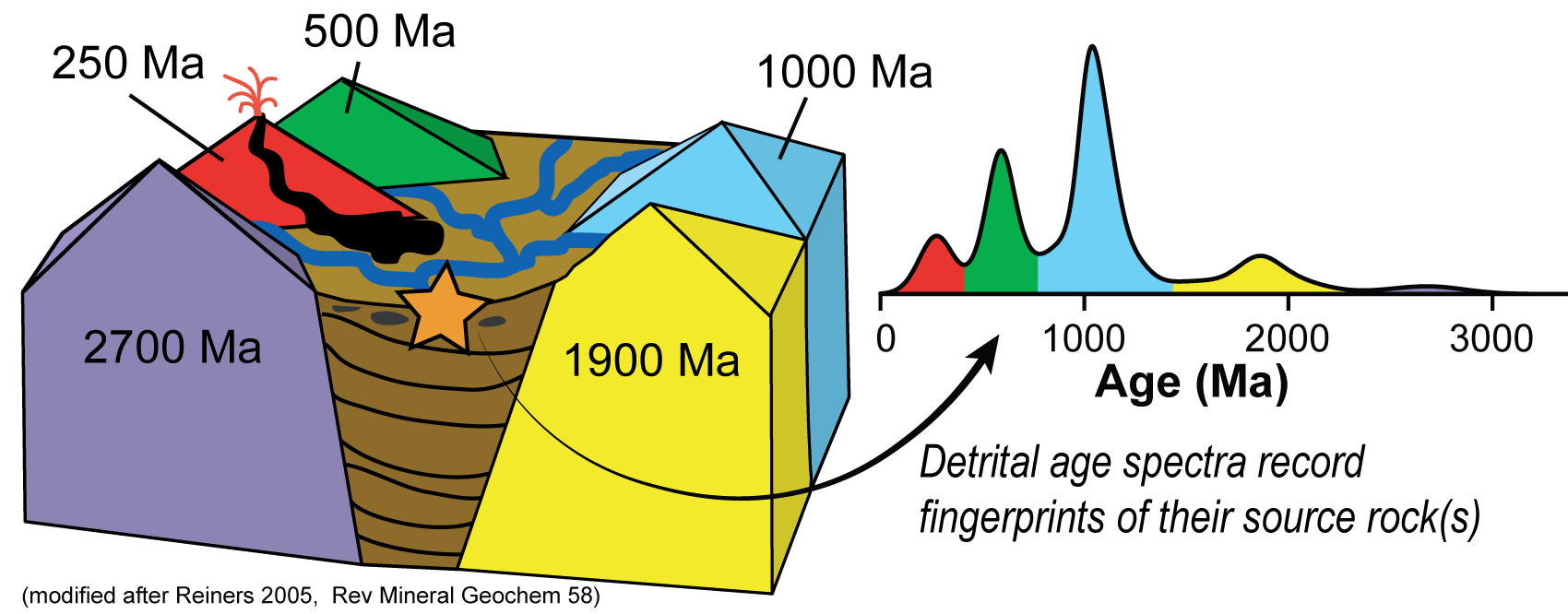
- Trace element chemistry is often reflective of the geodynamic setting of a mineral
- Many discriminative ratios exist that allow protolith discrimination
- Particularly strong candidates for trace element analysis are rutile (Cr/Nb), zircon (REE), and monazite (REE)
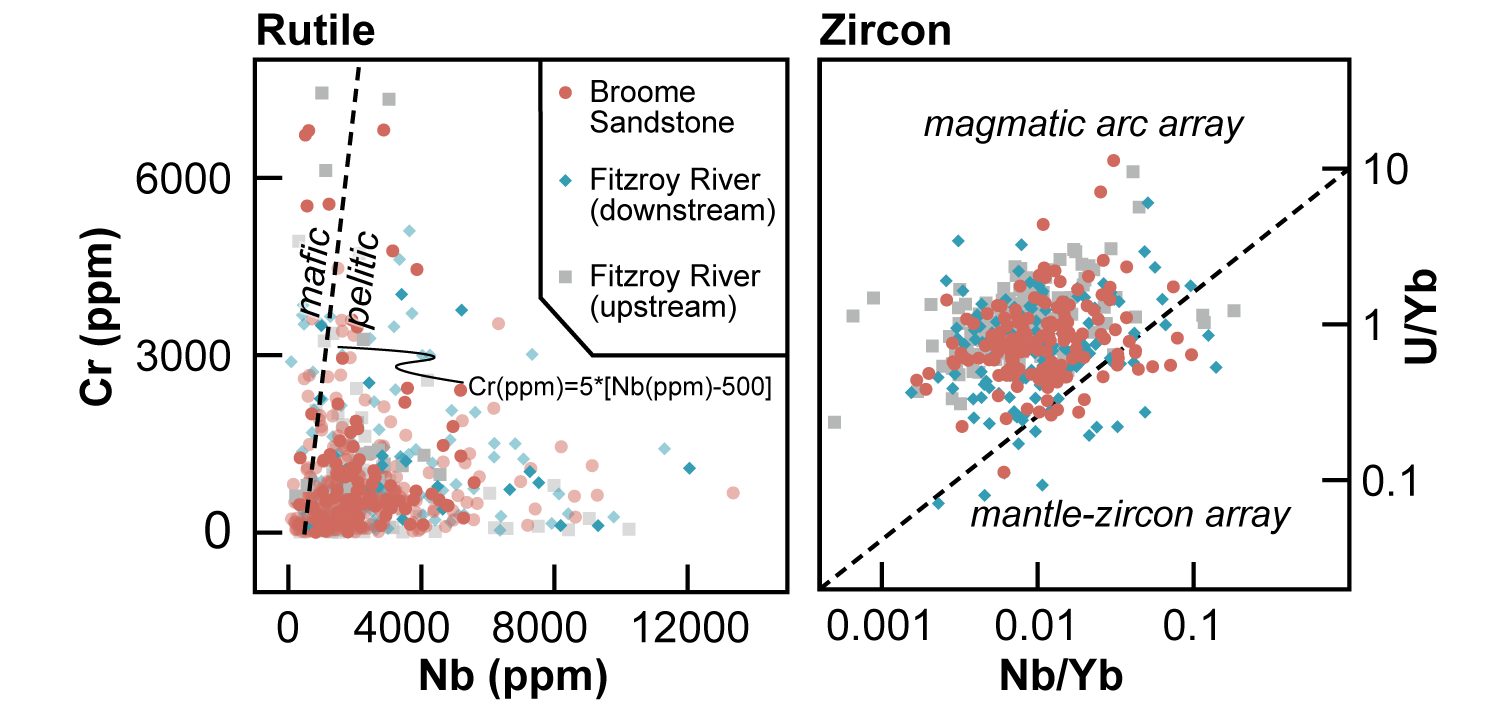
- Understanding formation temperatures helps refine source-to-sink reconstructions
- Zirconium content in rutile allows calculation of rutile growth temperatures and, hence, can be used to track high-grade metamorphic rocks that are fertile sources for this mineral
- Titanium content in zircon is also temperature-dependent and can be used to obtain formation temperatures for this mineral
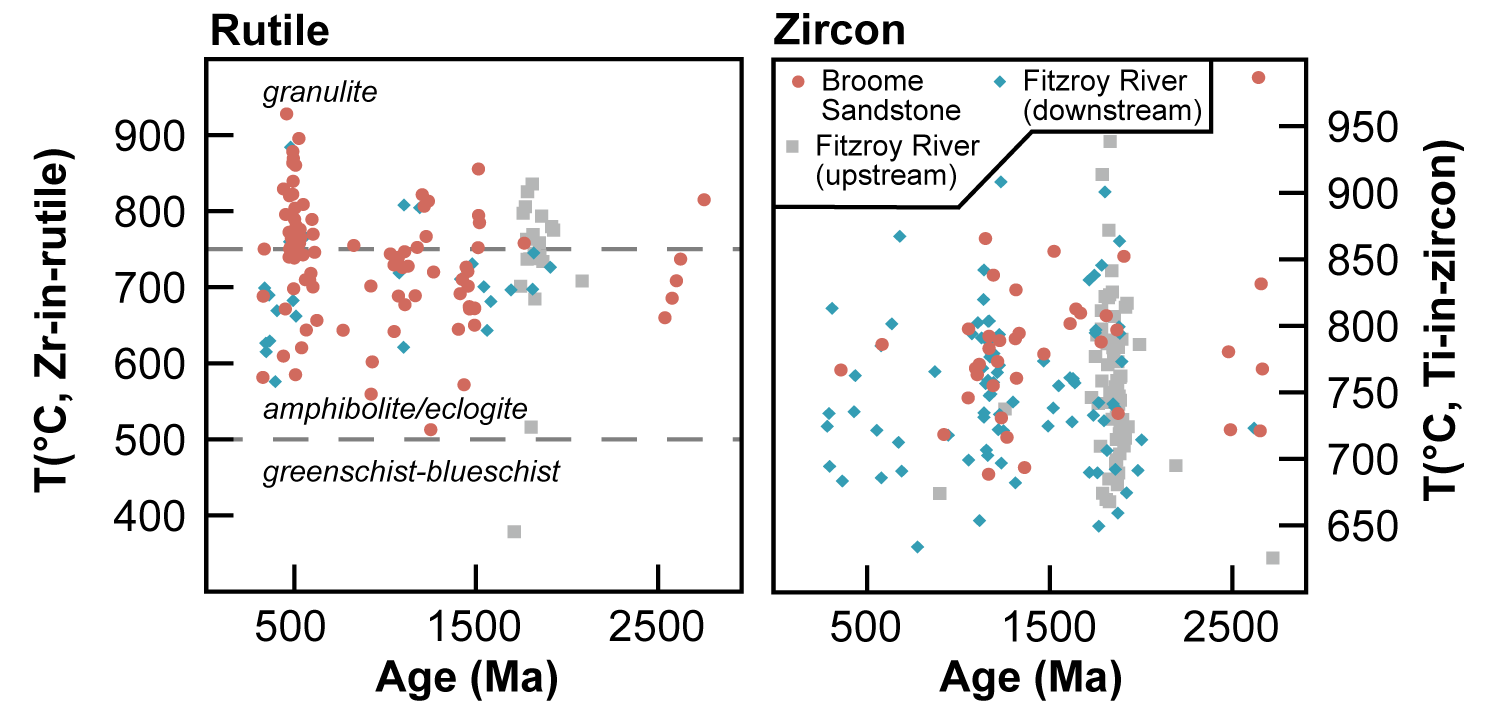
- Zircon grain shape is influenced by source magma chemistry during crystal growth, and may be later modified by erosion in a detrital setting
- Zircon's susceptibility to erosion is linked to the uranium and thorium content of the crystals
- Using the predictive power of machine learning algorithms, we can leverage the causal link between parent magma chemistry and zircon grain shape, to predict the silica content of the source rock for a zircon population
 RESOURCE PATHWAYS AND UPGRADING: Sediment transport metrics
RESOURCE PATHWAYS AND UPGRADING: Sediment transport metrics
- Source-normalized α-dose of detrital zircon to quantify upgrading of heavy mineral cargo during sedimentary transport and recycling
- Age distributions of detrital minerals reveal sediment mixing processes of the drainage system
- Mineral ratios, such as the apatite-tourmaline ratio (ATi), track upgrading processes
- α-dose of detrital zircon used to identify sedimentary lifecycle of grains
- Selective removal of more labile (metamict) zircon revealed by α-dose
- Source-normalized α-dose discriminates first- versus multi-cycle grains
- Source-normalized α-dose correlates to upgrading of heavy minerals
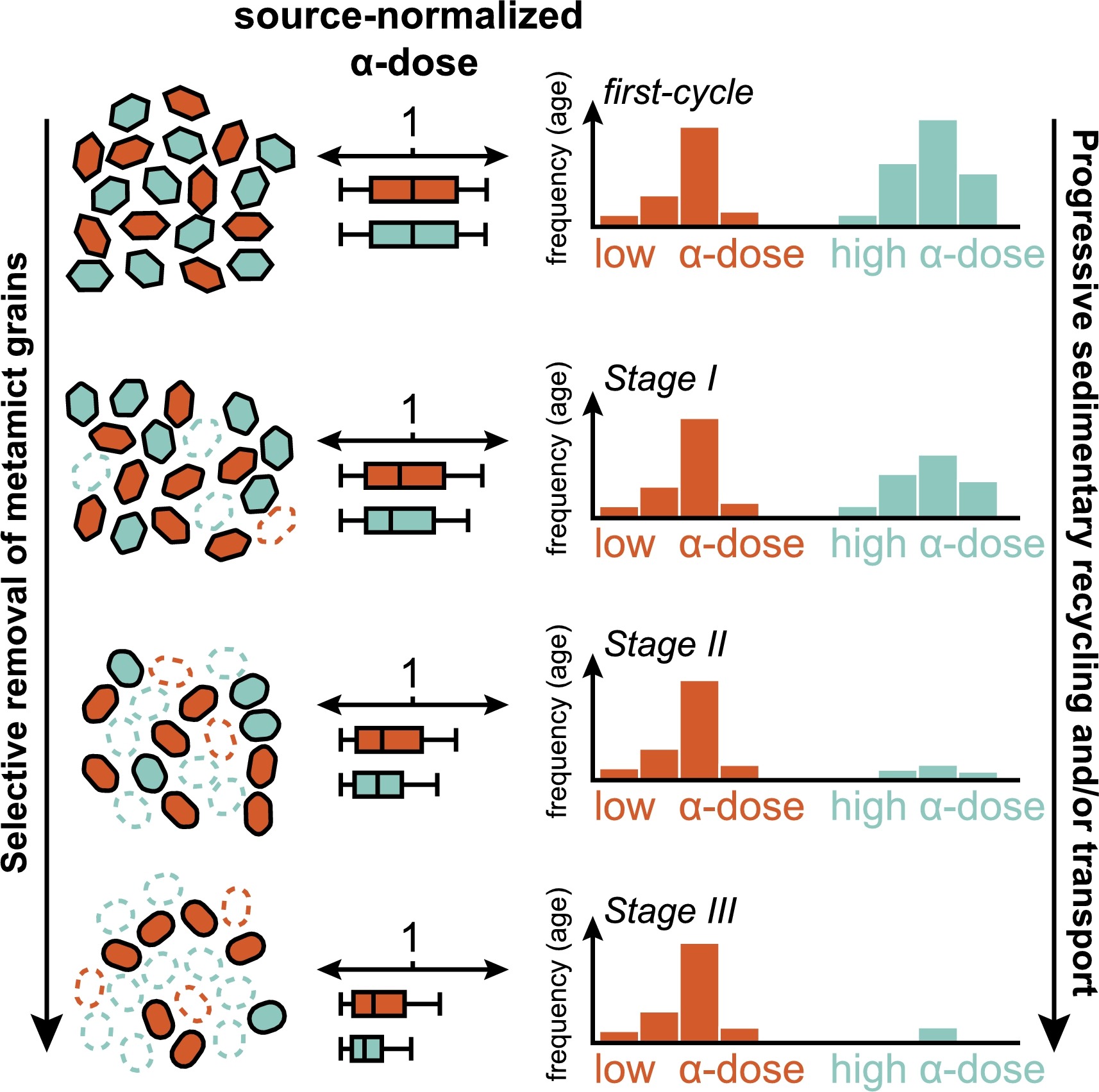
- Detrital zircon population characteristics capture heterogeneity of hinterland sediment sources and degree of sediment mixing and reworking
- Passive margins/extensional settings with well-mixed, multi-cycle sediment typified by dispersed polymodal age populations
- Statistical analysis of the age distributions - using the Shannon-Weaver diversity index, the 10th to 50th percentile and Chi2 metric - can reveal mixing processes related to time in the sedimentary system(s), and may track increases in HM grade

- Mineral indices can track variations in provenance and maturity, e.g., zircon-rutile-tourmaline (ZTR) and apatite-tourmaline (ATi) are used to adress maturity of sediments and exposure to weathering in intermediate storage
- ATi (100 × apatite / apatite+tourmaline) index shows promising results in the context of heavy mineral deposits, tracking upgrading processes
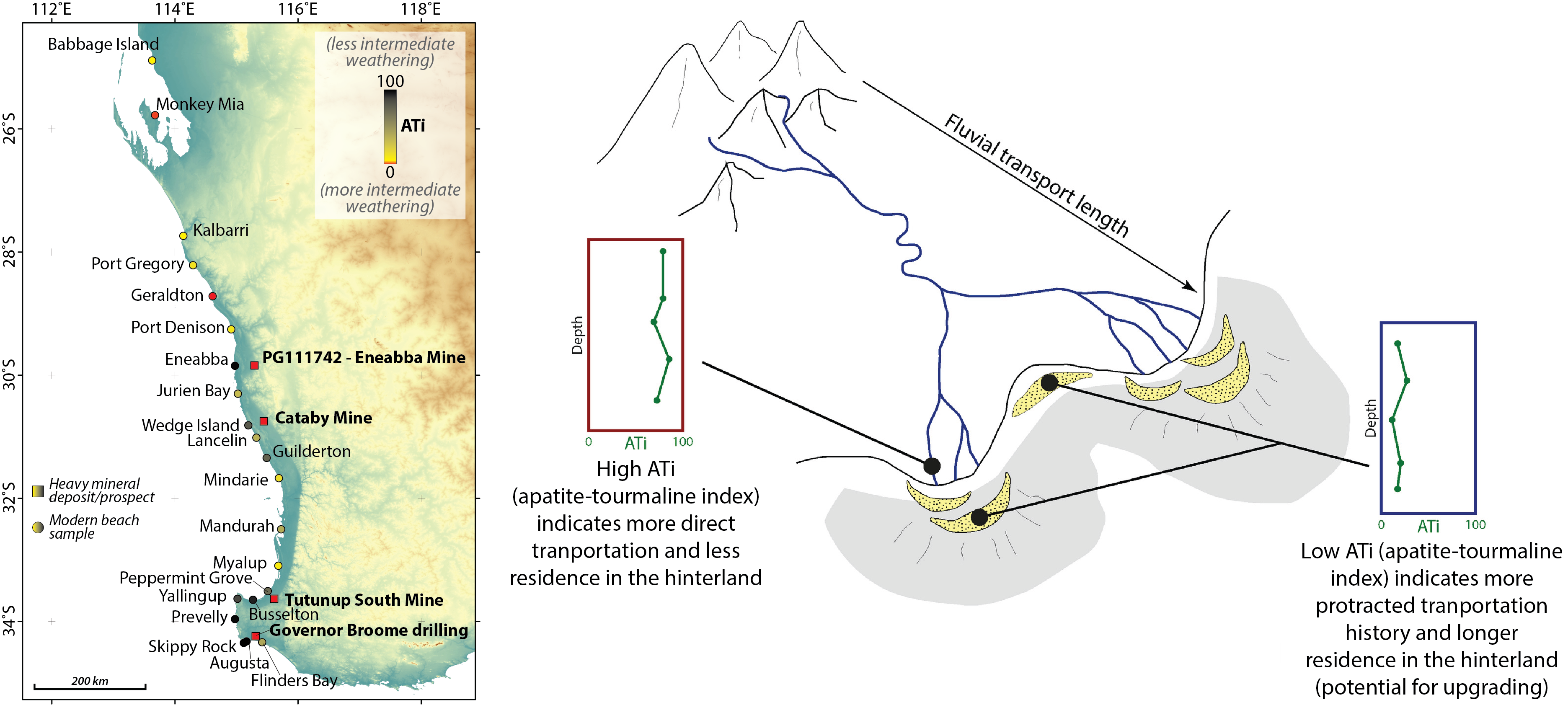
 RESOURCE TRAPS AND TARGETING: Depositional constraints
RESOURCE TRAPS AND TARGETING: Depositional constraints
- Dating of ferruginous induration tracks (post-)depositional processes, such as declining water tables
- Xenotime outgrowths on detrital zircon (and other authigenic minerals) can provide depositional age constraints by forming during diagenesis within a deposit or identify intermediate source rocks if representing an earlier diagenetic phase
- Dating of detrital minerals provides a maximum depositional age (MDA) constraint that can approach true depositional age, particularly in volcanic regions
- (U-Th)/He data from ferruginous indurations capture the onset of Plio-Pleistocene aridification in southern Australia
- Correlation of induration age with other climatic proxies indicates that ferruginous indurations track terrestrial water table evolution
- Indurations that relate to early diagenetic processes of deposits or groundwater decline related to SL-fall may help to extract depositional time constraints
- Conventionally, xenotime outgrowths were used to collect age constraints on depositional processes
- Recent findings suggest xenotime outgrowth may also be useful to track sediment routing from intermediate source rocks
- The latter is promising to better understand sediment recycling and, hence, upgrading of heavy minerals

- Maximum depositional age can be constrained using zircon age dating
- Concept: Sediment must be younger than the youngest zircon grains
- The concept is most appropriate in areas with active volcanism during sediment deposition
- Double dating of zircon integrating U-Pb and (U-Th)/He systems is most promising tool to detect volcanic components
 The Mineral Library
The Mineral Library
Zircon
Baddeleyite
Rutile
Titanite
Monazite
Xenotime
Garnet
Apatite
Cassiterite
Feldspar
Zircon
Baddeleyite
Rutile
Titanite
Monazite
Xenotime
Garnet
Apatite
Cassiterite
Feldspar
 The Bigger Picture
The Bigger Picture
- The integration of campaign-style analysis of detrital minerals with cutting-edge data analysis techniques enables unparalleled understanding of sedimentary systems
- Campaign-style geochronological and geochemical characterizations facilitate reliable intra- and inter-deposit comparisons, enabling the association of deposits with specific strandlines and the effective deciphering of the underlying sediment routing systems
- Big data allows robust source quantification of a diverse range of processes, e.g., upgrading history through intermediate basins, sediment mixing, and longshore drift processes
 Our Workflow
Our Workflow
 Our Indicative Costs
Our Indicative Costs
Costs vary depending on the number of samples and the specific analyses requested. However, indicative costs per sample are approximately $5,000 AUD, which includes the complete workflow from rock or heavy mineral concentrate to results. This includes sample preparation, sample characterisation, analysis, and comprehensive reporting within an interpretative framework. We invite you to engage in a preliminary discussion for a more precise cost estimation tailored to your needs.
 Contact us for more information
Contact us for more information
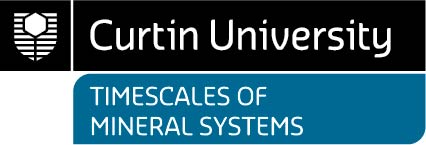
- Phone: +61 (8) 9266 4956
- Email: timescales@curtin.edu.au
- Web: curtin.edu/timescales
